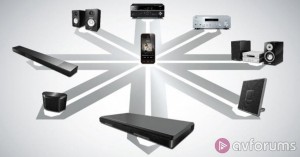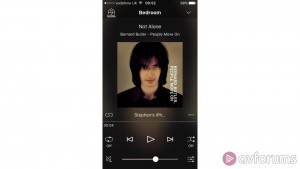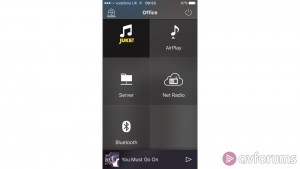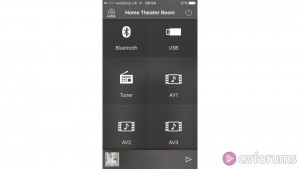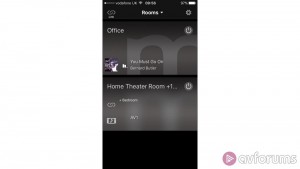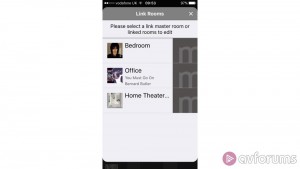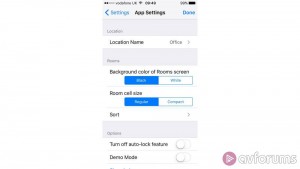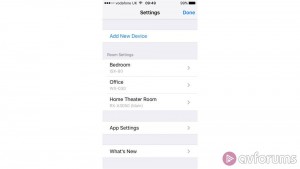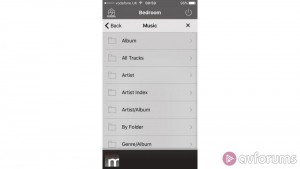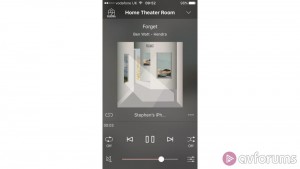What is Yamaha’s MusicCast?
The market for multiroom systems has been growing over the last few years as manufacturers try to move into a space that, until recently, was dominated by Sonos. So it came as no surprise when Yamaha announced a multiroom system of their own last year, although the name may have been familiar to those with longer memories. Yamaha actually tried to create a multiroom system, then called MusicCAST, over a decade ago but by their own admission it was beyond the capabilities of the technology at the time. So it must have been quite annoying for Yamaha to see Sonos grow to define a technology that they themselves pioneered. Thankfully Yamaha have gone back to the drawing board and, aside from the name, have created a completely new system that they hope will give Sonos and the other manufacturers a run for their money.
MusicCast is a multiroom system that comes included in many of Yamaha’s latest products, including soundbars, AV receivers, wireless speakers and HiFi systems. That means that you don’t have to buy into a dedicated ecosystem and instead can effectively create a MusicCast network by simply owning a series of compatible Yamaha products. You might not even initially want a multiroom system but if you have enough Yamaha products that support MusicCast, then you can easily create one should you change your mind. The ability to easily setup a networked series of products is the defining characteristic of a good multiroom system, as is the ability to handle high-res audio and the addition of an effective remote app. MusicCast has all these elements, along with an amazing level of flexibility, so let’s see if it lives up to the hype.
Features
MusicCast has been designed by Yamaha from the ground up to be a reliable, stable and effective multiroom system and as such it includes a number of key features. First of all, as we already mentioned in the introduction, what really makes MusicCast different is that it’s included across almost all of Yamaha’s entire range of products. What this effectively means is that you can build a multiroom system by default without having to buy all new units or lock yourself into a single ecosystem. MusicCast is available on Yamaha’s latest receivers, amplifiers, soundbars, mini systems, wireless music speakers and HiFi active speakers.
All MusicCast products include the MusicCast chipset and support for both WiFi and Bluetooth. There are access point networking functions inside all MusicCast products, allowing them to create a network with your wireless router or directly with each other; allowing MusicCast to create a network, no matter what. The system is also designed to be easy to setup, all you need to do is download the MusicCast app to your smart device. Then you connect the MusicCast product to your network and press connect to pair it with your smart device. It’s that simple and once you’ve started, you can also easily add more MusicCast products to your system. MusicCast uses a wireless network to connect all your compatible devices, thus allowing you to listen to your favourite music in any room where there’s a MusicCast product and control it all from a single app.
All MusicCast products have built-in WiFi (2.4GHz, 802.11 b/g/n) and DLNA version 1.5, so you can not only connect to other compatible devices in the MusicCast network but also connect to your network server, as well as use Bluetooth or AirPlay to listen to streaming services such as Spotify or internet radio. It also means that each compatible device can connect to the MusicCast network, allowing you to access other compatible devices within that network and, as a result, you can listen to audio from other devices and vice versa. So for example if you are listening to your TV through a soundbar and you want to do something in another room where there is a musicCast speaker, you could just listen from there.
MusicCast products are equipped with Bluetooth (Ver. 2.1 + EDR/A2DP, AVRCP), allowing you to connect other Bluetooth products (speakers or headphones for example) to your MusicCast system. All you need to do is connect your existing Bluetooth product to your MusicCast product via Bluetooth and you can send music from the non-MusicCast product to any connected MusicCast product in your network. The MusicCast system is compatible with codecs up to 192kHz and even DSD up to 5.6MHz, so you don’t have to compromise on audio quality either. In fact the majority of MusicCast products can handle WAV (PCM format only), MP3, WMA, AAC, ALAC, AIFF and FLAC files, with sampling rates up to 192kHz for WAV, FLAC and AIFF, 96kHz for ALAC files and 48kHz for everything else. MusicCast also supports Apple AirPlay, Spotify, Napster, Juke and Net Radio making it one of the easiest and most comprehensive multiroom systems to expand.
Testing
In order to test MusicCast fully we had a number of compatible Yamaha products in for review at the same time. So we had an RX-A3050 AV receiver in the home cinema, an ISX-80 wireless speaker in the bedroom, a WX-030 wireless speaker in the study and, towards the end of the review period, we had a YSP-5600 soundbar in the lounge. All of these products support MusicCast, so you can see how easy it is to create a multiroom system without even trying. We downloaded the iOS version of the MusicCast app and used an iPhone 6 to control the entire system, along with a range of different music files from compressed to high resolution audio.
In terms of testing we could stream content from our phone, as well as select services like Spotify and internet radio. We also connected the various MusicCast devices to our Apple devices via AirPlay, allowing us to test that as well. We connected non-MusicCast Bluetooth speakers to various MusicCast products in order to test adding them to the system. We also streamed content from our network server to the various MusicCast devices, as well as streaming content to each of the MusicCast devices as part of a multiroom set-up. Finally we streamed content from one device to another and then on all the devices simultaneously.
Setup
MusicCast is very easy to set up, all you need to do is download the MusicCast app, which is freely available for both iOS and Android, and then start the app and select Setup. You then turn the MusicCast product on and hold the power/connect button for three seconds, at which point the Network and Bluetooth lights will flash. The device will then connect to your network and you simply follow the instructions in the MusicCast app. If you already have a MusicCast network setup and are simply adding another device, then all you need to do is go into Settings and select Add New Device. Once you have setup or added your device, you can name it according to which room the MusicCast device is in and even add images of the room if you like. There is plenty of opportunity to customise your MusicCast experience in the Settings menu.
If you would rather connect via Bluetooth then all you need to do is turn on your MusicCast device, turn on Bluetooth on your connecting device and pair them. If you want to use AirPlay then all you need to do is select your MusicCast product from the list of devices on your AirPlay compatible source. You can also use DLNA to stream music from your network server or via services like Spotify, as well as listen to internet radio. Finally if you need to update the firmware on your MusicCast product, then you can also do this via the internet and the MusicCast app, making it easy to keep your MusicCast system up-to-date. The remote app is well designed and effective making setting up and adding MusicCast products very easy. The app also offers a number of other settings features, as well as a handy graphic equaliser for fine tuning your speaker to the environment.
Operation
MusicCast isn’t only easy to set up, it’s also intuitive to use, which is always the mark of a well designed multiroom system. When you open the MusicCast app there’s a page that shows all the different devices you have in the network and what was last played on them. If you want to listen to something on the MusicCast speaker in your office then all you need to do is turn it on, or select it if it’s already on, and then you can begin playing music on that device from whichever source you choose. There are a large number of potential sources, including the mobile device itself, Spotify, internet radio and your network server. There could also be connected Bluetooth and AirPlay devices, along with any other connected MusicCast devices and anything connected to them.
Once you’ve selected a device you can then play, pause and skip tracks or select different artists and albums. The same basic interface applies regardless of source and there are also track listings and album art. As well as controlling streaming services from your mobile device, you can also search any network servers and select music based upon artist, album etc. You can have different music playing in different rooms or there’s also the option to link MusicCast devices together so that you can have the same music playing in different rooms. All the various MusicCast devices have their own controls and some have their own remotes but for controlling the entire system the well designed remote app is slick and highly effective.
Performance
In terms of its performance, Yamaha’s MusicCast system delivered everything we would expect from a multiroom platform. As we’ve already described it’s easy to setup and very flexible in terms of sources and configuration. The fact that MusicCast is included on so many Yamaha products means that creating a multiroom system is fairly straightforward. In our test we had four different MusicCast compatible products in four different rooms in the house and the entire system worked perfectly. Once we had set up one device and then added the other three to the network, it was easy to control them all from the free remote app. The network that MusicCast created was robust and stable, with no discernible lag from room to room. The file support is excellent, with the system handling whatever we threw at it, including high resolution audio files. The same was true of connecting both Bluetooth and AirPlay devices, with the latter being a particularly useful feature with all the Apple products in our home.
The ability to control the system from a remote app is hardly new, although it is well designed and intuitive to use, and neither is the ability to play music in different rooms or the same rooms. Where MusicCast really has the edge over most of the competition is that because it’s in so many Yamaha products it offers far more audio sources than just about any other platform. For example if we were listening to the TV through the YSP-5600 in the lounge we could, if we wanted to, continue to listen to it via the WX-030 in the study. Alternatively if we were listening to a CD via the A3050 in the home cinema, we could continue to listen to that CD via the ISX-80 in the bedroom. This level of flexibility really sets MusicCast apart from the competition and is an indication of the thorough nature of Yamaha’s design approach. Ultimately MusicCast is well designed, flexible to setup, robust in operation and intuitive to use; in a word it works and you can’t ask for more than that when it comes to a multiroom system.
Conclusion
9/10
Pros:
Easy to setup
Very flexible
Effective remote app
Great performance
Plenty of features
Cons:
None
Yamaha MusicCast Multiroom System Review
Yamaha have a history of pioneering new technologies (height speakers and soundbars for example) but they were slightly premature with the original version of MusicCAST. Their new multiroom system has been redesigned from the ground up to deliver one of the most comprehensive, flexible, intuitive and robust platforms that we have tested to date. Yamaha’s decision to include MusicCast on many of their products is very sensible and means that you can develop a multiroom system by default, without being forced to buy a series of separate products. If you have a Yamaha soundbar that supports MusicCast in one room and a Yamaha wireless speaker that supports MusicCast in another, then you immediately have a multiroom system.
Set up is easy, with the excellent remote app taking you through the process and adding more MusicCast devices later is just as simple. The multiroom platform is robust and intuitive to control thanks to a well designed user interface, whilst the system supports a wide range of music files including high resolution formats. You can choose from a multitude of sources and play music in any room or all your rooms simultaneously. The MusicCast system is highly flexible and since all these devices are connected you can listen to a source connected to one device through another device in a separate room. Yamaha appear to have thought of everything and the result is a very impressive multiroom system that can grow with you as you gradually add more compatible products.
The obvious competitor to any multiroom system is Sonos and whilst they’re currently the market leader, MusicCast will certainly give them a run for their money. MusicCast is as easy to setup as Sonos but is far more flexible and included in a wider range of products. The fact that MusicCast is in Yamaha’s latest AV receivers is a major plus point and the flexibility means you can use better speakers and thus enjoy superior sound quality than Sonos. The multiroom market is booming and becoming highly competitive with alternative platforms from Samsung, LG and Denon to name just a few. However Yamaha have clearly been developing MusicCast for some time and the result is a platform that really demonstrates all the best aspects of a multiroom system.
The Rundown:
Connectivity: 9/10
Sound Quality: 9/10
Ease of use: 9/10
Features: 9/10
Verdict: 9/10
Read more at: https://www.avforums.com
Where to buy Yamaha: http://abtec.co.nz


